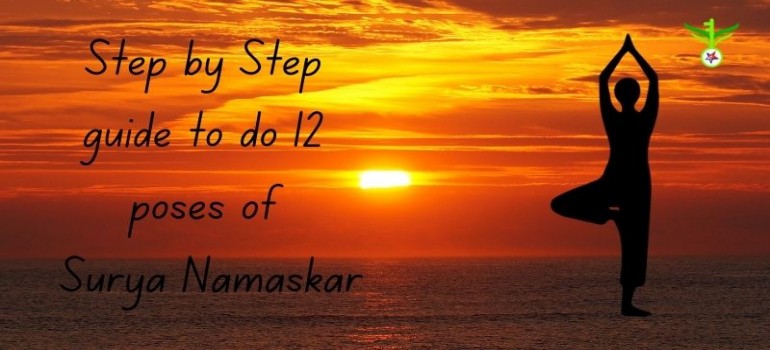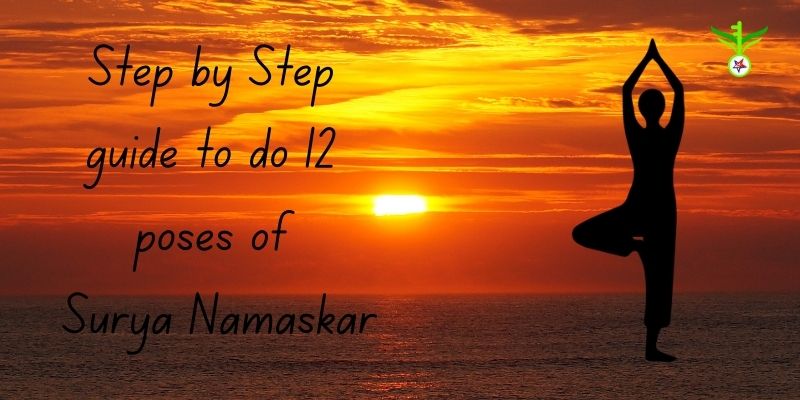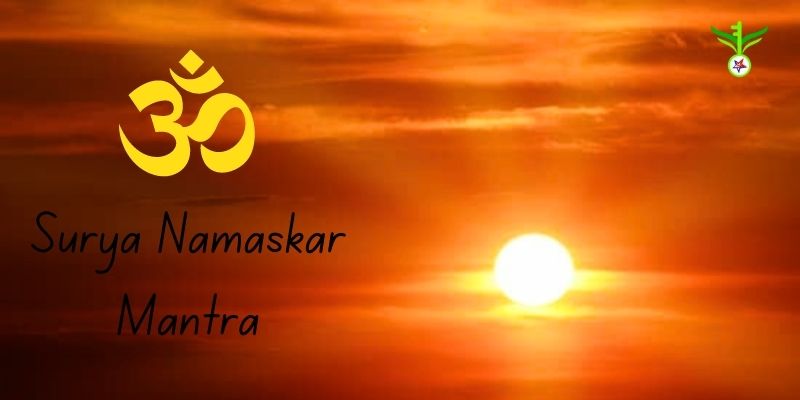
Surya Namaskar is not an idea but a practical concept which has been practiced for the last thousands of years in the Indian subcontinent. Surya or the Sun is considered to be supreme power as per Hindu religious texts. It is believed that by worshipping or showing respect to the Sun , we can actually overcome not only evil spirits but we can overpower many diseases.
The basic benefits of surya namaskar are:
There are certainly some yogic postures or steps that can be done to show respect to the Sun and gain control over different chronic diseases.
Worshipping the Sun has been evidently found in different civilizations of the world and that includes Egyptian, Peruvian , Mexican and in almost all the civilizations of the world. Purpose of worshipping may be the same in every civilization and religion which is overcoming all negative thoughts, actions and diseases and gaining positive energy to make health and overall life better. Yet the way of worshipping the Sun may differ from one another..
Worshipping Sun has been a part of yoga. Yoga is as old as practicing Sun worship.

There are 3 different Surya namaskar types :
a) Ashtanga
b) Iyengar
c) Hatha yoga
Most popular type is hatha yoga. 12 different surya namaskar poses belong to hatha yoga namaskar. Every yogic posture of hatha yoga namaskar sets the spines in an appropriate way to build a healthy body with a healthy mind. 12 signs of Surya namaskar cleanse the respiratory passage, promote strong physical, emotional and spiritual wellness.
Let’s study and understand 12 different surya namaskar steps in yoga.
a) Standing on the mat on the feet.
b) Closing the eyes,
c) Keeping the arms in the center of the chest.
d) Raising the hands in pranam or namastay posture.
a) Taking pace and breathing out.
b) Breathing in deeply.
c) Raising the hands towards the front and bending backward.
d) Putting the pelvis forward.
e) Exhaling.
a) Breathing out and bending towards the knees.
b) Maintaining spine straight and long.
c) Keep the tip of your finger towards the floor.
d) Bending the knees in such a way that the chest touches the thighs.
a) Keeping your right leg back.
b) Maintaining the knees down.
c) Easily tucking the toes underneath.
d) Keeping the left knee bent and maintaining the floor flat on the floor.
e) Pressing the fingertips or palm on the floor .
a) You must sit in a padmasana posture.
b) Keep your hands at both sides.
c) Putting the chest ahead, neck at upright level and eyes on a particular point.
d) Breathing in and raising the arms together.
e) Merging arms together in a vertically straight position.
f) Joining the fingers together and keeping the palms joined.
1) It improves flexibility and calms down the mind.
a) Breathing out .
b) Keep your knees down.
c) Come down and push your chest towards the floor.
d) Maintaining your elbows right at the sides.
a) Keeping your palms vertically on the ground.
b) Lie down with your abdomen towards the ground.
c) Raising head up in a cobra posture.
d) Take a deep breath in. .
e) Keeping your neck position straight.
1) It brings relief from spinal disorder.
2) Increases flexibility and eases movement.
3) Expand the shoulders, chest, back and leg muscles at once.
1) Keep standing with your feet a little away from one another.
2) Breathe in.
3) Keep your arms raised above your head and interlock the palms of your hands and tilt the palms in the upward condition facing towards the sky..
4) Lift your toes.
5) Exhale
6) Come back to the same position as before.
a) It improves blood circulation.
b) It brings flexibility in muscles.
c) It raises strength in the back, neck and hips.
d) It strengthens the complete nervous system.
e) It is effective in managing menstrual issues.
1) Keep yourself in vajraasana pose.
2) Get up on your knees.
3) Maintaining knees and ankles at a distance.
4) Hold on to your arms at your sides.
5) Keep your right foot on the floor.
6) Breathe in
7) Put the entire weight on the right leg and stretch your left leg back.
1) Breathe out.
2) Put the right foot on the front.
3) Keeping the feet closely with one another..
4) Expand your arms and spines together.
5) Bend down and touch your feet.
6) Stay in this position as long as you can.
1) It is required to stand in an erect posture..
2) Breathe.
3) Need to raise your hands in a salutation posture towards the Sun.
4) Breathe in deeply.
5) Make an arch backward by moving your head and trunk backward.
6) Do not let your knees and elbows be bent.
7) Expand your arms and back.
8) You are requested to hold yourself in this posture for 10 to 15 seconds.
1) It boosts strength in the entire feet.
2) Tones your hips and abdomen.
3) Bring control over muscular movements.
1) Stand straight.
2) Lift your hands up.
3) Breathe in.
4) Interlock the palms in raised condition over your head.
5) Tilt the interlocked palms.
6) Lift your heels..
7) Breathe out and relax.
This is how to do surya namaskar in 12 different forms.
Precautionary measures to do 12 steps of surya namaskar.
Further advice in concern with practicing surya namaskar in 12 forms is that you should not forget chanting mantra dedicated to the Sun.

Overall , we understand that by practicing surya namaskar and chanting different surya mantras, we are going to :
Recent Comments
Oops ! There is no comments yet